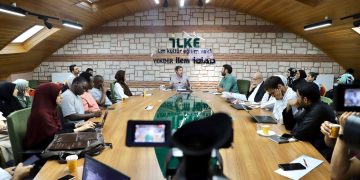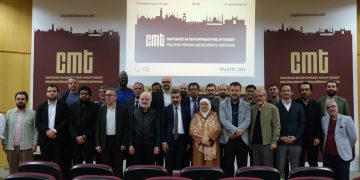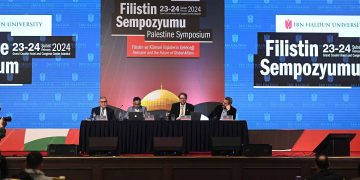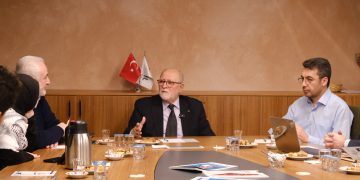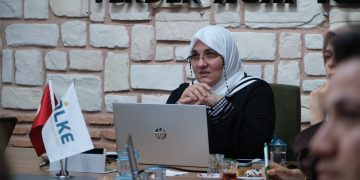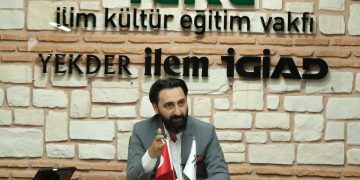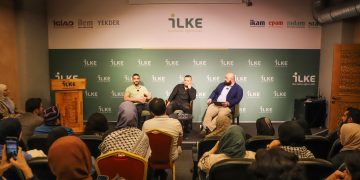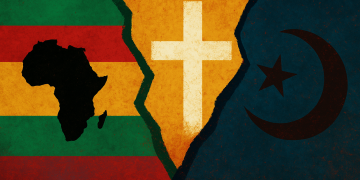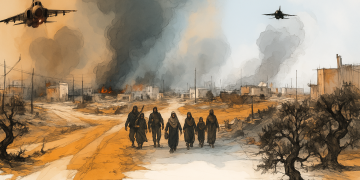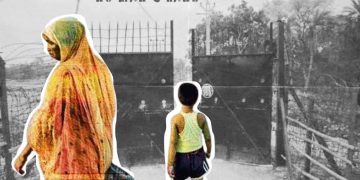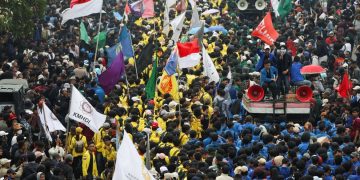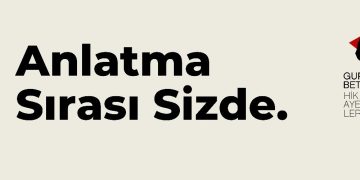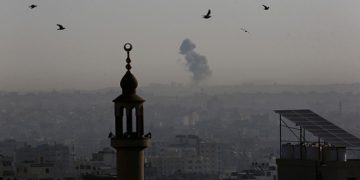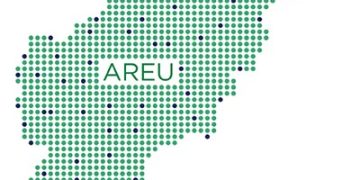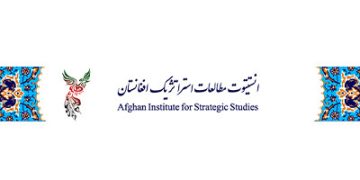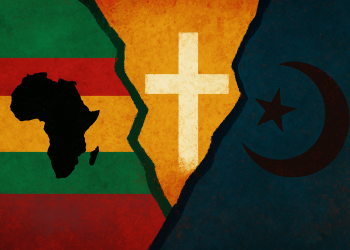One of the most unique and interesting interpretations of Islamic political thought belongs to the Shi’a sect offered a different proposal on how Muslims would be governed in his absence. Among these Shiite groups, the Imāmiyya (Twelve Imam Shi’a) first claimed that their imam, whom they claimed to have disappeared (ghaybāt), would one day return and establish the legitimate government. However, as the process of the imam’s return dragged on, the sect tried to find some political solutions to this delay. The velayat-e faqih system, which also shapes the politics of Iran today, emerged as a product of this resolution period and aspired to rule the state with a revolution led by Ayatollah Khomeini in 1979. This transformation in Shiite political thought resulted in both the ulema taking the seat of leadership and the people’s access to a politics in which they could vote. This article will provide a brief history of the transformation in Shiite political thought, the process of the ulema taking over politics, and how the velayat-e faqih system functions as the official representation of Shiite politics today.
A Historical Overview of Shiite Political Thought
The Imāmiyya, who gave the right of religious and political leadership to the twelve imams descended from the Prophet Ali (s.a.w), did not recognize any political system without the twelfth imam at its head as legitimate in the early periods (Saffār, 2010, pp. 53-54). Since the members of the sect generally lived under the rule of Sunnite governments, some of the ideas defended about politics in the early periods can be considered understandable. For example, relations with political administrations, which were considered illegitimate, were not favored, and it was forbidden to go to the qadi appointed by these administrations even for the solution of a legal problem (al-Hur al-Amilī, 1993, 27/11-12). However, since the Imam, who was expected to return since his disappearance in 874, did not appear, the Imāmī community was obliged to flex its stance in relation to politics. It is no coincidence that the first time that this flexing coincided with the Shi’ite al-Buwayhids. From this period onwards, since the Shi’ites had the support of the state behind them, they revised their views on politics, albeit under certain compulsory conditions, and began to make contacts with politicians and take part in these administrations.
A similar situation was observed during the Ilkhanid and Safavid periods, which allowed Shiites to exist more freely. In particular, the Safavid state’s adoption of the Imāmiyya as the official sect and pursuing a state policy along this line affected the authority of the Shiite scholars. The famous Shiite scholar Muhaqqiq Karakī (d. 1534), who came to Iran during this period and supported Shah Ismail in his policies, legitimized the authority of the Shah with his fatwas and encouraged the participation of Shiites in politics and bureaucracy. His ideas that the ulama could be the political representative of the imam also inspired the group of jurists who would later become the religious and political rulers (Uyar, 2020, p. 104). His contributions and efforts were not left unrequited by Shah Tahmasb, who issued an edict characterizing al-Karakī as the true owner of the state and nāib al-imām (representative of the imam) (Kartaloğlu, 2022, pp. 156-157). The fact that the ulema crowned the Safavid shahs, a practice that became a tradition from this period onwards, is crucial in terms of showing the extent to which their political representation power had reached (Arjomand, 1984, p. 177).
In the post-Safavid period, the Shiite ulema have become very influential actors on the political scene. The Qajars and later the Pahlavi period in Iran were periods in which the rulers were aware of this power of the ulema and had to get their endorsement in order to sustain their legitimacy and refrained from opposing the ulema. In this process, the ulema gained the power to change several decisions taken by the state rulers. Although Iran and Russia had made an agreement in the early 1800s and the ruler of the time, Fath Ali Shah, did not agree to go to war, the ulema were able to bring Iran into the war against Russia with the fatwa of jihad. Again in 1891, when the right to sell and export tobacco in Iran was granted to a British company, Mirza Hasan Shirâzî issued a fatwa declaring that using tobacco was haram and that it meant waging war against the absent imam; the Shah was forced to step back and cancel the concession decision (Algar, 1980, pp. 90, 211). Finally, the fact that the ulema were one of the parties in the constitutional debates between 1905 and 1911 demonstrated that they now had a say in regime-related debates as well.
Velayat-e Faqih System and the Transformation of Shiite Political Thought
The system of velayat-e faqih (guardianship of the faqih), which marks the ultimate power of the ulema, is a proposal for Islamic governance that was originally founded by Mullah Ahmad Naraqi (d. 1829), a scholar of the Qajar era, and systematized by Ayatollah Ruhollah Khomeini (d. 1989). This concept, which refers to the right of the faqih’s guardianship and authority of disposition, expresses the idea that the just faqih who fulfills the conditions is the religious and political representative of the Prophet and the Imams as the legitimate rulers after him during the period of ghaibāt. Inspiring an Islamic revolution, Khomeini succeeded in transforming velayat-e faqih from theory to practice by eliminating the Pahlavi regime. At the same time, Khomeini, who was the first “veliyy-e faqih” of the Islamic State, stated that he received his authority from the Prophet when appointing a prime minister and based the power of the faqih on a divine power (Biçen, 2022, p. 95). Being the first to make this representation, he earned the title of “imam”. However, he also emphasized that this rank represented by the faqih was equivalent to the rank of the Prophet and the imams, not in terms of position but in terms of duty (Khomeini, 1979, p. 62).
The velayat-e faqih system has been criticized by Shiite scholars in both Iran and Iraq since it was first proposed. According to these scholars, the system has some theoretical as well as operational dilemmas. Criticisms of the system focus on the narrations and jurisprudential foundations on which the velayat-e faqih is based, the unlimited rights granted to the religious guide by divine will, the lack of a fixed term of office for the religious guide, the fact that the authority of the faqih extends to political matters, and the authority of the faqih is considered the same as that of the prophet and the imam.
The velayat-e faqih system has been criticized by Shiite scholars in both Iran and Iraq since it was first proposed. According to these scholars, the system has some theoretical as well as operational dilemmas. Criticisms of the system focus on the narrations and jurisprudential foundations on which the velayat-e faqih is based, the unlimited rights granted to the religious guide by divine will, the lack of a fixed term of office for the religious guide, the fact that the authority of the faqih extends to political matters, and the fact that the authority of the faqih is considered the same as that of the prophet and the imam. A considerable number of scholars argued that the ideas adopted on these issues expressed a radical deviation from the traditional Shi’ite view, that this idea would be considered bid’ah, and that a person’s gaining competence through religious education did not mean that he could rule the state (Uyar, 2020, p. 362). However, these criticisms did not stop Khomeini from establishing velayat-e faqih.
Founded in 1979, the Islamic Republic of Iran is a unique system in the Islamic political tradition. In this system, which forms the basis of the Iranian Constitution, the highest authority is represented by the cleric, who is called “veliyy-i faqih” and “religious guide”. In this respect, the Islamic Republic of Iran is the only state today dominated and ruled by the clerical class. In addition to the religious guide, who holds the legislative, executive and judiciary powers in the country, with the constitutional revision in 1989, the prime ministry was abolished, and the president became the second highest office of the state. The president, who is also the head of the executive power, is directly elected by the people every four years. In this respect, the president is the highest state official directly elected by the people.
The political bodies that distinguish the velayat-e faqih system from others are the Assembly of Experts (Majlis-i Hubregân) and the Islamic Shura Assembly (Majlis-i Shûrâ-yı Islamî), which are also elected by the people. The two assemblies have varying numbers of members and different duties. The Assembly of Experts is also the authority that appoints the religious guide. Although its powers include supervising and dismissing the religious guide, in practice, since six of these members are appointed by the guide, it cannot be said that a full supervision process is carried out. The Islamic Shura Council is the legislative body whose members are directly elected by the people and represent the nation. The people can choose the members of the assembly themselves, and in cases where the assembly complains about the functioning of the executive and judiciary, it can submit its complaint in writing to the National Shura Assembly on the basis of Article 90 of the Constitution. In addition to these institutions, the Council of Guardians (Shūrā-yı Nigahbān), which oversees the religious functioning in the country and ensures that the velāyat-e faqih system operates in accordance with the Shari’ah, is also very significant. This council determines the functioning of sharia rules in the country as well as the presidential candidates to be submitted to the people’s election. The Majma-i Teşhîs-i Maslahat-ı Nizâm (Majma-i Teşhîs-i Maslahat-ı Nizâm) is assigned the task of resolving any possible problem between the Council of Guardians and the Islamic Shura Council (Taflıoğlu, 2009, pp. 129-134). Although there is no theoretical obstacle to women’s candidacy for the presidency within the system in question, no woman has been approved as a candidate in practice. However, women can be members of parliament.
In the velayat-e faqih system, the nation is one of the three pillars on which the concept of sovereignty is grounded. During the revolution, Khomeini’s frequent references to the people on the issue of sovereignty was one of the biggest reasons for his popular support. Indeed, as stated in the first article of the Constitution, Khomeini established the Islamic Republic of Iran with overwhelming popular support by obtaining the approval of 98.2% of the voters in a referendum held immediately after the revolution. This involvement of the people in the governance process ensured that the people, as well as the representatives of the innocent imams, had a voice in the government through democratic means. However, it should be noted here that although Khomeini used the term republic to refer to the new regime, he refrained from using the word democracy. He warned the people against the word democracy because it was a Western term and emphasized that the people’s desire was not a democratic republic but an Islamic republic (Khomeini, 1979, p. 218). With this process, the people became involved in politics either directly or indirectly through elections.
Although it is possible for the people to participate in the functioning of the Islamic Republic of Iran through elections, it is understood that the above-mentioned control mechanisms and institutions in decision-making processes restrict the power of the people. The fact that half of the members of the Assembly of Experts, which elects the religious guide, are appointed by the religious guide, thus the religious guide cannot be supervised in practice, the Guardian Council has a wide range of authority, and political parties cannot carry out healthy propaganda activities all limit the participation of the people and prevent the democratic processes from being conducted in a healthy way. The last presidential election in Iran was held in 2021 under the shadow of these problems. Among the Conservative and Reformist candidates who applied for the presidency, no Reformist candidate was nominated, which drew reactions from prominent politicians, including President Rouhani (Caner, 2021, p. 11). One of the possible consequences of this situation was that the election was held with a very low turnout.
As a result, it is seen that Shī’a’s political approach has undergone a significant transformation due to the conditions encountered in the historical process from the period of its first emergence to the present day, and in this process, the ulema have gradually taken the position of rulers. While no political administration was considered legitimate in the early periods, it is quite surprising that it has evolved into a political concept in which the faqih sits at the head, the people are included in the process through elections, and even voting is considered a religious duty. Although it still has its criticisms and serious problems, it can be argued that the velayat-e faqih system, is a system that paves the way for the participation of the people in politics and gives them the right to elect members of parliament and the president.
References
Algar, H. (1980). Religion and state in Iran 1785-1906: The role of the ulama in the Qajar period. Berkeley: University of California.
Arjomand, S. A. (1984). The shadow of God and the hidden imam. Chicago: The University of Chicago Press.
Biçen, G. (2022). Bir siyaset teorisi olarak velâyet-i fakîh: Âyetullah Humeynî örneği Doctoral dissertation, Sakarya University, Institute of Social Sciences. Sakarya, Turkey.
Caner, M. (2021). 2021 İran cumhurbaşkanı seçimi: Muhafazakar dönüşümün ayak sesleri. Ankara: Seta Publication.
Humeynî, A. (1979). İslâm fıkhında devlet. çev. Hüseyin Hatemi. Istanbul: Düşünce Publication.
Hür el-Âmilî, M. b. H. (1993). Vesâilü’ş-Şîa ilâ tahsîli mesâili’ş-Şîa. Kum: Müessesetü Âli’l-Beyt li-İhyâi’t-Türâs.
Kartaloğlu, H. (2022). Safevîlerin ilk döneminde iktidar-ulema ilişkisi. Ankara: Fecr Publication.
Saffâr, E. C. M. b. H. (2010). Besâ’iru’d-deracât. Beirut: Mektebetü’l-A‘lemî li’l-Matbûât.
Taflıoğlu, M. S. (2009). İran İslam ihtilalinde Âyetullah Humeynî ve velâyet-i fakih meselesi Doctoral dissertation, Hacettepe University, Institute of Social Sciences. Ankara, Turkey.
Uyar, M. (2020). Başlangıcından günümüze Şiî politik düşüncesi. Istanbul: İyidüşün Publication.

